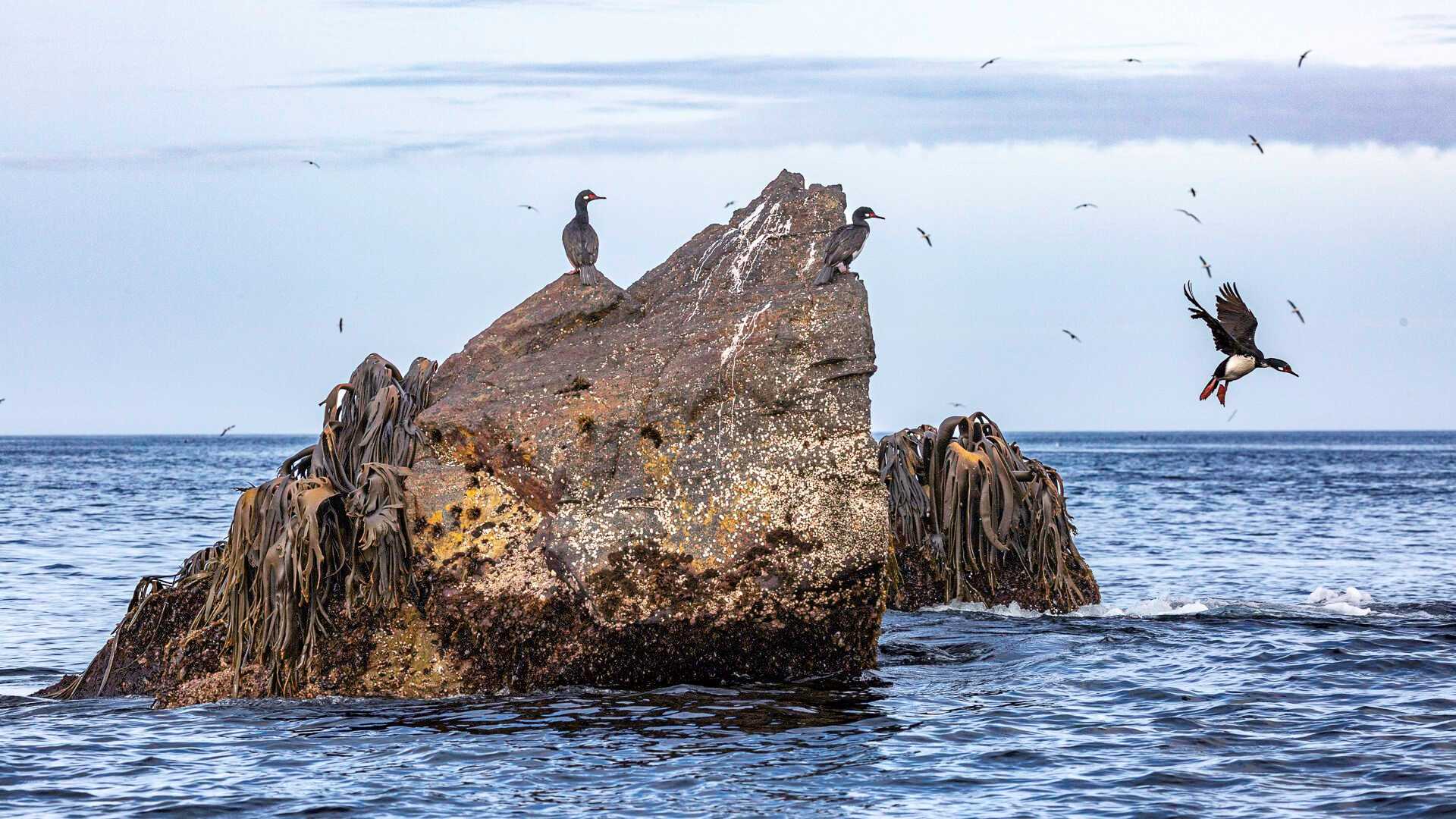The uninhabited island known as Steeple Jason stands out among the archipelago of the western Falkland Islands as one of the most spectacular and thrilling to visit. The coastal flats around the rugged peaks are host to the largest breeding colony of black-browed albatrosses in the world, but the island is very exposed to the huge swells of the South Atlantic, so it can be visited only in the very best conditions. After a successful landing on this remarkable place, we moved on to New Island, where we visited another breeding site for albatross and rockhopper penguins, perched on the edge of a cliff high above the ocean that stretches from there to South America.
3/12/2025
Read
National Geographic Endurance
At Sea towards Ushuaia
It was a day for reflection. Our journey was coming to an end as we left the Falklands behind and National Geographic Endurance steamed towards South America and Ushuaia. The seas were kind to us, and despite low winds, we had black-browed albatross, among other birds, around us. In the morning, we listened to the naturalists onboard as they presented on different subjects in the ice lounge. Land-ho! Mid-morning we had land in sight, South America was appearing on the horizon. Upon entering the Beagle Channel, we saw possibly a hundred sei whales. While the seabirds were waiting for the wind on the surface, the whales were feeding a short distance from the ship. As our vessel waited for the pilot to arrive, we could still see whale blows in the distance. We enjoyed a teatime extravaganza with Chef Sara and her team. Cheese and wine brought most of the ship’s inhabitants to deck 8, and while sipping wine we watched sea lions, dolphins, and stunning views of Tierra del Fuego go by until it was time for Captain Aaron’s farewell toast. As much as we are reflecting on our expedition today, it has also been a day of celebration! It has been an incredible journey of many miles, great people, and wonderful experiences. Thank you all!







